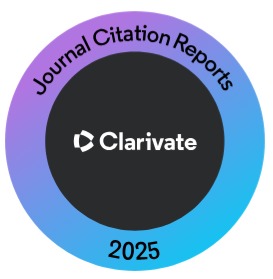Effects of Virtual Reality on Static and Dynamic Balance Among Individuals with Down Syndrome
Keywords:
Down syndrome, Postural balance, Quality of life, Virtual RealityAbstract
Objective: To determine the effects of virtual reality on static and dynamic balance among individuals with Down syndrome.
Methodology: A quasi-experimental study was conducted at Imran Rehabilitation Center, Karachi, Pakistan, from Nov 2020 to April 2021 through a randomized sampling technique. Twenty-four Down syndrome individuals between 6 and 9 years of Age were included. Children who could stand and walk independently, comprehend the instructions and were diagnosed with 50% to 70% IQ level (assessed using the Stanford Binet Intelligence Scale) were included. In contrast, DS children with autism, impaired vision or hearing loss and any associated neurological disorders, i.e. Epilepsy, muscular dystrophies and traumatic brain injury (TBI), were excluded. Data was analyzed using the SPSS version 23.
Results: Group A (n=12) participants had a mean age of 8.08±0.79 years, and Group B (n=12) participants had a mean age of 7.61±0.94 years. Both groups had similar gestational Age and IQ levels. The Pediatric Balance Scale (PBS) and Rhomberg test assessed balance and motor control. Within-group analysis revealed significant improvements in both groups for PBS scores. Group analysis did not demonstrate significant differences in the PBS scores or Rhomberg test outcomes. The mean PBS scores for Group A and Group B were 50.33±2.22 and 49.41±3.20, respectively. In the Rhomberg test, no significant differences were found between the two groups with eyes open or closed.
Conclusion: The study concluded that static and dynamic balance was significantly improved in both groups; however, virtual reality group intervention showed a more significant improvement in static balance.
References
Asadzadeh A, Samad-Soltani T, Salahzadeh Z, Rezaei P. Effectiveness of virtual reality-based exercise therapy in rehabilitation: A scoping review. Inform Med Unlocked. 2021; 24(5): 100562. doi: 10.1016/j.imu.2021.100562.
Syed-Abdul S, Malwade S, Nursetyo AA, Sood M, Bhatia M, Barsasella D et al. Virtual reality among the elderly: a usefulness and acceptance study from Taiwan. BMC Geriatr. 2019; 19(1): 223. doi: 10.1186/s12877-019-1218-8.
Alsakhawi RS, Elshafey MA. Effect of core stability exercises and treadmill training on balance in children with Down syndrome: randomized controlled trial. Adv Ther. 2019; 36(9): 2364-73. doi: 10.1007/s12325-019-01024-2. Epub 2019 Jul 12.
Aprigio J, de Castro CM, Lima MA, Ribeiro MG, Orioli IM, Amorim MR. Mothers of children with Down syndrome: a clinical and epidemiological study. J Community Genet. 2023; 14(2): 189-95. doi: 10.1007/s12687-022-00627-7. Epub 2022 Dec 23.
Shelton AR, Malow B. Neurodevelopmental disorders commonly presenting with sleep disturbances. Neurotherapeutics. 2021; 18(1): 156-69. doi: 10.1007/s13311-020-00982-8.
Javaid M, Khan IH. Virtual reality (VR) applications in cardiology: a review. J Industr Integr Manag. 2022; 7(02): 183-202.
Cie?lik B, Mazurek J, Rutkowski S, Kiper P, Turolla A, Szczepa?ska-Gieracha J. Virtual reality in psychiatric disorders: A systematic review of reviews. Complement Ther Med. 2020; 52: 102480. doi: 10.1016/j.ctim.2020.102480. Epub 2020 Jun 9.
Gao Y, Ma L, Lin C, Zhu S, Yao L, Fan H et al. Effects of virtual reality-based intervention on cognition, motor function, mood, and activities of daily living in patients with chronic stroke: a systematic review and meta-analysis of randomized controlled trials. Front Aging Neurosci. 2021; 13: 766525. doi: 10.3389/fnagi.2021.766525.
Bezerra ED, Orssatto LB, Oliveira SN, Sakugawa RL, Ribeiro AS, Diefenthaeler F, Moro AR. One-year cessation following resistance training differently affects neuromuscular, body composition, and functional capacity in older adults. Sport Sci Health. 2021; 17: 347-55.
Cuenca-Garcia M, Marin-Jimenez N, Perez-Bey A, Sanchez-Oliva D, Camiletti-Moiron D, Alvarez-Gallardo IC et al. Reliability of field-based fitness tests in adults: a systematic review. Sports Med. 2022; 52(8): 1961-79. doi: 10.1007/s40279-021-01635-2. Epub 2022 Jan 22.
Erden A, Acar Arslan E, Dündar B, Topba? M, Cavlak U. Reliability and validity of Turkish version of pediatric balance scale. Acta Neurol Belg. 2021; 121(3): 669-75. doi: 10.1007/s13760-020-01302-9. Epub 2020 Feb 19.
Andermo S, Hallgren M, Nguyen TT, Jonsson S, Petersen S, Friberg M et al. School-related physical activity interventions and mental health among children: a systematic review and meta-analysis. Sports Med Open. 2020; 6(1): 25. doi: 10.1186/s40798-020-00254-x.
Ferguson GD, Jelsma D, Jelsma J, Smits-Engelsman BC. The efficacy of two task-orientated interventions for children with Developmental Coordination Disorder: Neuromotor Task Training and Nintendo Wii Fit training. Res Develop Disabil. 2013; 34(9): 2449-61. doi: 10.1016/j.ridd.2013.05.007.
Ali MS. Impact of core stability education on postural control in children with spastic cerebral palsy. Bull Faculty Phys Ther. 2019; 24: 85-9.
Chen FT, Etnier JL, Chan KH, Chiu PK, Hung TM, Chang YK. Effects of exercise training interventions on executive function in older adults: a systematic review and meta-analysis. Sports Med. 2020; 50(8): 1451-67. doi: 10.1007/s40279-020-01292-x.
Zago M, Duarte NA, Grecco LA, Condoluci C, Oliveira CS, Galli M. Gait and postural control patterns and rehabilitation in Down syndrome: a systematic review. J Phys Ther Sci. 2020; 32(4): 303-14. doi: 10.1589/jpts.32.303. Epub 2020 Apr 2.
Posnick JC. Temporomandibular Disorders: Effects of Occlusion, Orthodontic Treatment, and Orthognathic Surgery. Orthognathic Surgery. 2022: 306.
De Ponti R, Marazzato J, Maresca AM, Rovera F, Carcano G, Ferrario MM. Pre-graduation medical training including virtual reality during COVID-19 pandemic: a report on students' perception. BMC Med Educ. 2020; 20: 332. doi: 10.1186/s12909-020-02245-8.
Ríos-Rincón AM, Adams K, Magill-Evans J, Cook A. Playfulness in children with limited motor abilities when using a robot. Phys Occup Ther Pediatr. 2016; 36(3): 232-46. doi: 10.3109/01942638.2015.1076559. Epub 2015 Nov 13.
Karakas H, Seebacher B, Kahraman T. Technology-Based Rehabilitation in People with Multiple Sclerosis: A Narrative Review. J Multiple Sclerosis Res. 2021; 1(3): 54-68. Doi: 10.4274/jmsr.galenos.2021.2021-10-3.
Battilana F, Steurer S, Rizzi G, Delgado AC, Tan KR, Handschin C. Exercise?linked improvement in age?associated loss of balance is associated with increased vestibular input to motor neurons. Aging Cell. 2020; 19(12): e13274. doi: 10.1111/acel.13274.
Ptito A, Papa L, Gregory K, Folmer RL, Walker WC, Prabhakaran V et al. A prospective, multicenter study to assess the safety and efficacy of translingual neurostimulation plus physical therapy for the treatment of a chronic balance deficit due to mild-to-moderate traumatic brain injury. Neuromodulation. 2021; 24(8): 1412-21. doi: 10.1111/ner.13159. Epub 2020 Apr 29.
Schedler S, Brock K, Fleischhauer F, Kiss R, Muehlbauer T. Effects of balance training on balance performance in youth: are there age differences? Res Q Exerc Sport. 2020; 91(3): 405-14. doi: 10.1080/02701367.2019.1676371. Epub 2020 Jan 6.
Alghwiri AA, Whitney SL. Balance and falls in older adults. In: Guccione's Geriatric Physical Therapy. 2020; p.p. 220-239. doi: 10.1016/B978-0-323-60912-8-00010-5.
Downloads
Published
How to Cite
Issue
Section
License
Copyright (c) 2024 Journal of Liaquat University of Medical & Health Sciences

This work is licensed under a Creative Commons Attribution-NonCommercial-ShareAlike 4.0 International License.
Submission of a manuscript to the journal implies that all authors have read and agreed to the content of the undertaking form or the Terms and Conditions.
When an article is accepted for publication, the author(s) retain the copyright and are required to grant the publisher the right of first publication and other non-exclusive publishing rights to JLUMHS.
Articles published in the Journal of Liaquat University of Medical & health sciences are open access articles under a Creative Commons Attribution-Noncommercial - Share Alike 4.0 License. This license permits use, distribution and reproduction in any medium; provided the original work is properly cited and initial publication in this journal. This is in accordance with the BOAI definition of open access. In addition to that users are allowed to remix, tweak and build upon the work non-commercially as long as appropriate credit is given and the new creations are licensed under the identical terms. Or, in certain cases it can be stated that all articles and content there in are published under creative commons license unless stated otherwise.























